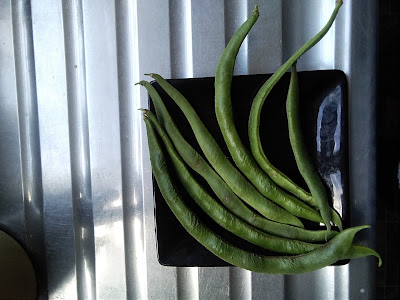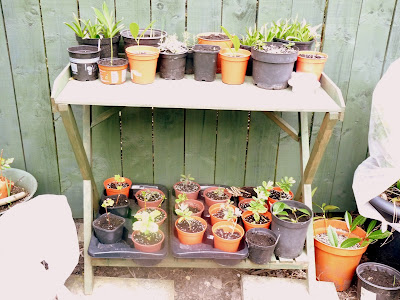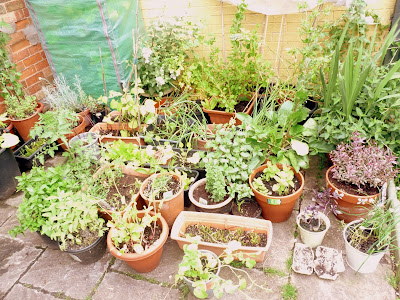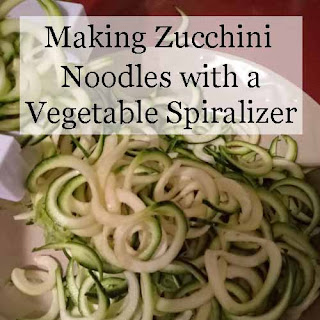Can You Grow Vegetables If You Only Have A Patio Or Balcony?
Many people would like to grow vegetables but either do not have a garden
at all or just a small garden. I do not have a huge garden, it is not
small but not really big enough for me to grow all the lovely decorative
plants I like to grow and also everything I like to have for nature and
grow vegetables. Really I need acres!
For the past few years, I have become increasingly interested in growing
vegetables and so three years ago we started. As there is no space left in
the garden, it had to all be in pots.
The first year we only decided to grow veg in March and so had to get on
with it really quickly as many seeds need to be sown in March or April. So I
did not have time to do research or much reading before I started
planting.
In some ways, this was a good thing as I did not get a chance to be worried
about it though I could have done with some basic advice. However, to my
amazement, most of the crops were a success!

|
|
Beautiful Home Grown Beans
|
Is It Possible To Grow Vegetables In Outdoor Containers?
Last year I grew the same vegetables and improved upon my skill after
reading some good books which helped me to understand vegetable growing in
containers and what I was doing.
This year I have just started growing my container vegetable garden again
and even branched out to some other seeds to try.
I think you just have to give it a go and see what happens. After all,
plants always want to grow. If we give them the right conditions they will
do their best to grow as big and strong as they can.
This book "Grow All You Can Eat in 3 Square Feet" is one I used to get me
going with vegetable growing. It covers how to grow a range of vegetables in
a limited space in pots, windowboxes, various containers and how to organise
raised beds. I found it easy to navigate and I liked the pictures to give me
inspiration. A decent book especially if you are new to vegetable container
gardening.
 10%
10%
You may have a small garden, or it might already be filled with your
decorative plants and flowers and you do not wish to turn over a section
to vegetable growing. Or maybe you do not have a garden but perhaps you
have a balcony or a courtyard or even space outside your door. Even people
who have large gardens may not have soil conditions suitable for all
vegetable growing. So yes I would say it is possible to grow veg in pots
with just a few conditions.
Below are a few tips and suggestions from my own experience for
starting to grow vegetables and salads in a container garden.
Tips For Growing Vegetables In Containers Outdoors
1. It is advisable to use good quality compost to fill your containers. I
try to always get a high-quality peat-free garden compost that is a good
all-rounder. If you can't get compost each year you can use garden soil but
this depends on your garden soil, of course, if you have a garden. Ours is
heavy claggy clay and while strong plants do very well in it, seeds always
suffer and rarely germinate well.
So I have to buy good vegetable growing compost and this year I have also
bought specific seed compost for starting off the seeds that I will then
transplant into bigger pots. You will need to feed your veg throughout the
year as well. I find a tomato feed or vegetable feed liquid is
good.
2. For vegetables that are remaining where they are sown choose the largest
containers you can. This makes sowing easier and you will not have to water
quite so much. Soil always dries out quicker in a container.
I do start off many of my bigger vegetables in small pots first then
transplant them to the large pots. However, the smaller the pot the more
watering you will need to do.
Containers of metal while they look great will heat up too much and your
veg will suffer. If possible try not to have black containers which will
also heat up more quickly.
However, I do have black plastic containers which are Ok if I shade
them with other plants or keep them in semi-shade. Choose containers of clay
or plastic and if terracotta do line with a plastic bag or old compost bag
and make drainage holes, to help prevent it drying out so fast.
You can theoretically use any container for veg growing and I have been
known to use large yogurt pots and even old washing up bowls with drainage
holes punched through!
There are containers to avoid though and that is any that have ever held
any poison or chemicals and avoid old tyres which may leach chemicals to
your veg. You do not want to be eating any form of chemical!

|
|
Vegetables And Flowers Started Off In Small Pots
|
3. Get a watering can with a rose attachment or a hosepipe with a gentle
spray or mist setting for watering the young plants and seeds. You do not
want to wash away seeds or destroy young seedlings with a harsh blast of
water.
4. Always water the compost first then sow the seeds. This means for the
initial stages you will not wash away the seeds into a clump while
watering. Then read the instructions carefully, some seeds require a light
covering of compost or vermiculite, others need light to germinate and
should not be covered.
5. Try to place your pots in the best position for the specific seeds - for
most vegetables they need a sunny spot but for some they will cope well or
need semi-shade. The huge advantage of pots is that they can be moved if needed.
6. When you have sown your seeds do label the containers with the name of
the seeds and the date! I forgot to do this with many of the pots in the
first year and I thought I would remember what I had sown in each pot, but
how wrong I was!
7. Put a few sticks in the compost to dissuade the neighbourhood cats,
local foxes, or other wildlife from using your nice soft compost as a
toilet until the plants grow up.
8. Do not have a monoculture of vegetables. Either place your containers
amongst other plants that are in the ground or pot up some flowering
plants, wildflowers and herbs and place them in amongst the vegetables.
That way not only will you attract more beneficial pollinators to help but
will also attract predators to deal with any pests that will lay eggs or
eat your vegetables.
The carrot fly for example is attracted by the scent of the carrot so if
we plant other strong scents nearby like mint or chives, it confuses
the carrot fly who cannot find the carrots! I do not use any pesticides or
chemicals at all in our garden and that goes for the vegetables as well.
So it is important to me to work with nature on this and attract all the
wildlife I possibly can into our garden. Yes, I do lose some vegetables to
pests but I gain so much more in terms of healthy food and beneficial
wildlife.

|
|
Flowers Planted Near Container Vegetable Garden
|
Which Vegetables Can We Grow In Outdoor Containers?
It is always best if you simply grow what you love to eat! You can try
anything given a big enough pot. However, some crops like asparagus take a
long time to reach maturity and are not so suitable for growing in
pots.
Crops like squashes generally take up a lot of space and need more than
most containers, though it might be possible with a small variety if you
really wanted to try. Especially if you are starting out it is advisable to
stick with easier growing varieties. Success breeds success and as we get
more confident we can try more difficult veg.
You can try anything you like. Here are just a few suggestions from my own
experience. Probably the easiest crops to grow in containers outside are the
Salad Varieties then vegetables like Beetroot, Rocket, Radish, Broad
beans, Baby Carrots, Potatoes and Runner Beans. You can easily buy a wide
variety of seeds online.
1. Rocket is very quick and easy to grow and I have had success growing it
in a wide variety of containers. Sow a little every week for a good
supply.
2. Onions-I buy setting onions rather than seeds as they are so much
easier. I simply place them in the container at the required distance and
depth.
3.Potatoes in a bag. This is my most successful way of growing potatoes. I
choose potatoes that say they do well in containers. It is important to
exclude light from the developing tubers so I simply use 2 compost bags
turned inside out and punch drainage holes in the bottom and sides with
scissors/ Then a layer of compost and put 2 maybe 3 potatoes in then cover
deeply with more compost as they grow. Simply empty the bag out for
harvesting. So much easier than digging in heavy soil!
4.Radish is very easy to grow and does well in pretty much any container.
Sow a few, then do succession sowing every couple of weeks for a crop all
summer.

|
|
Beautiful Home Grown Radish
|
5. Carrots but I would advise you to use a tall container and also try a
baby carrot variety so they do not need the depth that a garden soil can
provide.
I do find carrots take up a container for a long time and are small so
sometimes wonder if they are worth it but they are my fave vegetable so
deserve a place here.
They are a vegetable I would always struggle to grow in my heavy soil
anyway as soon as they hit a block they will fork and grow distorted so a
container or raised bed will always be the way I will grow carrots. Do be
aware that carrots must not dry out as again they will grow distorted. One
big advantage of growing in a container is that you can easily protect it
from carrot fly by placing it high up or by covering it with a light layer
of fleece.
6.Leafy salads from lettuce to oriental mixes and mustards I grow in
shallow containers as they are generally a quick-growing crop. I also sow
them in between other vegetables like the slower-growing onions.
7.Runner Beans usually require a really big deep pot and supporting canes.
I make the canes out of our Cornus or thinner tree branch
cuttings.
8.Broad beans are easy to grow and need well-drained soil and if a taller
variety, will need staking. Smaller varieties may not need much
support.

|
|
Our Container Vegetable Garden!
|
So if you do not have a garden and need or want to grow vegetables do
gather together some containers and give it a go! You may have some
failures, but you will have many successes.
There is nothing like eating vegetables and salads you have grown from seed
and nurtured. You have just picked it and minutes later it is on your plate.
You know absolutely what is in it and that it is free from chemicals and has
not traveled miles to reach you.
In my opinion, homegrown vegetables always taste better than anything you
buy, they are fun to grow and you will feel so proud of yourself. So garden
or no garden, in my experience you certainly can grow your own vegetables as
a container garden.
More Gardening Articles
Note: The author may receive a commission from purchases made using links found in this article. “As an Amazon Associate, Ebay (EPN), Esty (Awin), and/or Zazzle Affiliate, I (we) earn from qualifying purchases.”











































